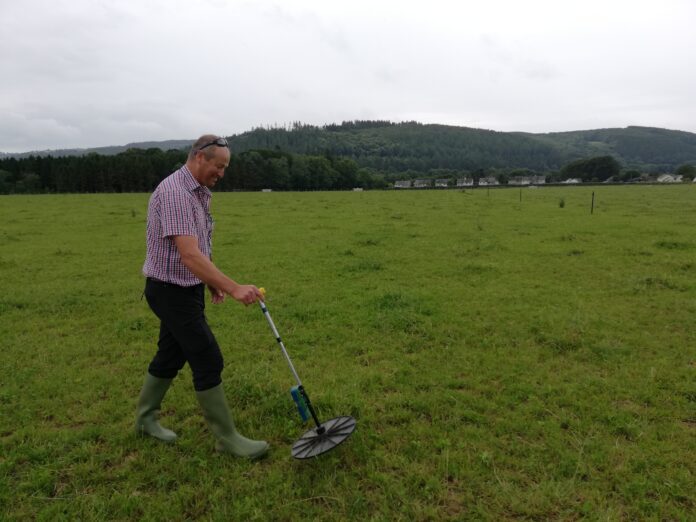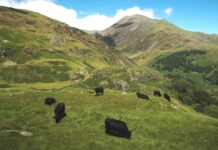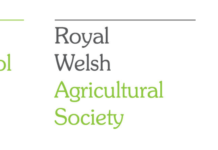
A trial carried out on Welsh grassland farms has shown that foliar fertiliser can increase nitrogen use efficiency by up to four times compared to conventional N fertiliser.
Foliar feeding is a technique of feeding plants by applying liquid fertiliser directly to the leaves.
Soil and grassland consultant Nigel Howells, the advisor to the European Innovation Programme (EIP) Wales project, says a misconception exists that foliar fertiliser shouldn’t be applied to grazing fields. However, it can, on both pasture and silage ground, he advises.
As interest in this technique rapidly grows in Wales, Mr Howells offers his top tips on how to get the best results from foliar feeding.
1. Get soils tested
As with any fertiliser regime, soil pH, phosphate, potash and magnesium should be at an optimum, so get these tested, and address any shortfalls.
2. Apply at the correct rate
To maximise efficiency, foliar fertiliser must be applied at the correct dose.
“For the EIP trial, we applied it to the grazed pasture at 9 kgN/hectare (ha), and to the silage ground at a rate of 46 kgN/ha,” Mr Howells explains.
3. Apply at the appropriate stage of grass growth
Grass cover should be at a minimum of 2200 kg dry matter (DM)/ha – equivalent to a height of 3-4 inches or 7.5cm.
“If there is sufficient leaf area, the response will be the same as for granular fertiliser, but the efficiency can potentially be doubled,” says Mr Howells.
This is because plants absorb the essential elements through their leaves.
4. Don’t be tempted to apply too soon to post-grazing residuals
Mr Howells says in one trial, when foliar fertiliser was applied immediately after cows had grazed a field and cover was at 2100 kgDM/ha, there was a significant shortfall in the DM grown compared to the field’s potential.
As a guide, for graziers on a 21-25 day rotation, he recommends that the ideal time to apply is 10 days post-grazing: “There is a good amount of leaf by then to take in the product.”
Palatibility isn’t affected because low levels of fertiliser are applied, and are quickly used by the grass plant due to the speed and efficiency of foliar feeding.
5. The application period for silage ground is different for every farm
After cutting, Mr Howells advises spreading dirty water or a conventional ground applied fertiliser within a day or two, to get the grass to a point where it will absorb the foliar feed.
“It is different for every farm; it depends on whether the farm is on a four-or six-week cutting system, and also on the quality of the slurry or manure,” he says.
But, as a guide, he suggests 10 days post-cutting.
6. Foliar fertiliser performs better with late-afternoon application
The application requirement is very similar to that of a herbicide.
Avoid applying in the middle of a summer’s day – early morning or late afternoon is suitable, although late afternoon is preferable, because it will give the grass time to soak up the nutrients without the moisture evaporating in the sunlight.
7. Don’t apply if rain is imminent
A couple of hours of dry conditions are needed post-application, to allow the product time to dry and be taken in by the plant.
If it does rain, the benefit of the product won’t be lost – it will simply wash into the soil and behave in a similar way to granular fertiliser – but the efficiency potential will be negated.
One of the findings of the EIP study was that in dry and cool conditions, foliar feed achieved a better response than conventionally applied fertiliser.
“Foliar feeding appears to give higher yields in adverse conditions, for example cool and/or dry conditions,” says Mr Howells.
“This likely to be because absorption through the leaves is less affected by adverse soil conditions compared to uptake through the roots.”
8. Do your sums and work out which fertiliser method works for you
When the EIP project was run, the total cost of applying foliar fertiliser and humic acid to the grazing land was £26/ha; for conventional fertiliser, it was £43/ha.
“At today’s fertiliser prices, and including both the product and spreading costs, it would be £56/ha for foliar feed and £93 for conventional fertiliser,” Mr Howells calculates.
“Those figures incorporate contractor costs of £18/ha to spray the foliar feed and £10/ha to apply dry fertiliser.”
EIP Wales, which is delivered by Menter a Busnes, has received funding through the Welsh Government Rural Communities – Rural Development Programme 2014-2020, which is funded by the European Agricultural Fund for Rural Development and the Welsh Government.
Help keep news FREE for our readers
Supporting your local community newspaper/online news outlet is crucial now more than ever. If you believe in independent journalism, then consider making a valuable contribution by making a one-time or monthly donation. We operate in rural areas where providing unbiased news can be challenging. Read More About Supporting The West Wales Chronicle


























